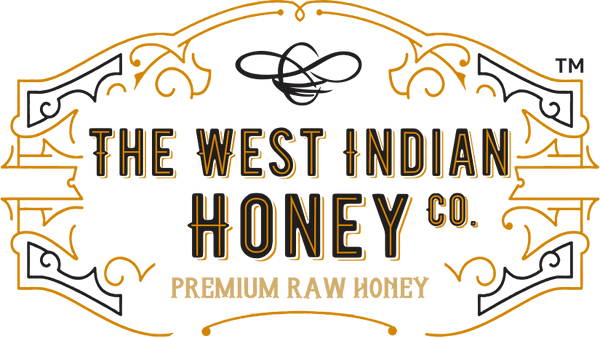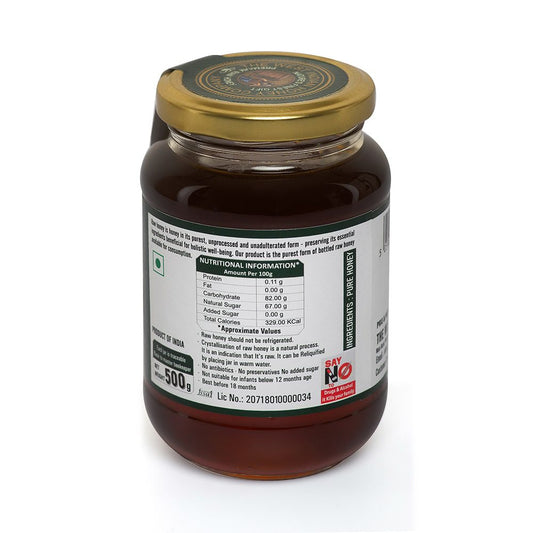FAQs
The WEST INDIAN HONEY CO.
Frequently Asked Questions
Your product is raw honey. So is it same as what we get in the market or something different?
Most commercial honey brands available in market are not raw honey; they are processed. A honey is raw when after extraction from the bees, it is not processed (especially heated) and so all its nutrients are preserved and not lost.
If you don’t process honey, is it safe to consume?
Honey in its raw form is free from any micro-organisms or infections. The only thing that you might want to worry about is physical impurities from the surroundings. These are all filtered out by our harvesting team before packaging our product. So the bottled honey that you get with our label on it is perfectly safe to consume.
What are the characteristics of a raw honey?
First, a raw honey product will have that mention on its bottle/ container. Also, it is impossible to maintain the same color, texture, viscosity and fragrance of raw honey throughout the year. This is because the honey-bees will take nectar from different flowers throughout the year.
What is the shelf life of your honey?
Our raw honey has indefinite shelf life; and has no expiry date. However, under legal stipulation, and as per the tests of recognized testing laboratory, the prescribed shelf life of our honey is 18 months from the date of bottling.
Can raw honey also be called organic honey?
Raw and organic honey are completely different! Our product is raw, but not organic. Which means that the crops on which our bees feed may have got chemical fertilizers and other nutrients.
If a honey brand is marketed as organic, it is not same as being raw. It just might be processed honey!
How is commercial honey different?
The honey that we see flooding in the supermarkets is pasteurized. It has a smooth texture, even color, and never crystallized. Pasteurization destroys the nutrients in honey, stripping it off all the benefits and leaving you with, well, plain glucose syrup!
Some manufacturers even add refined sugar to the honey to enhance the taste. So while you are helping yourself to a spoonful of what you think is a natural sugar alternative, you are actually loading up on the very thing you try so hard to avoid!
Why does honey vary on color and taste?
The color and flavor of honey differs depending on the nectar source (the blossoms) visited by the honey bees. Honey color ranges from nearly colorless to dark brown, and its flavor varies from delectably mild to distinctively bold, depending on where the honey bees buzzed.
So how to know if honey is raw?
To make sure you are buying raw honey, look at the label. It should say “100% raw” or “unpasteurized”. Words like “organic” and “pure”. However, it does not indicate that the honey was unheated. If the label passed the test, look at the product more closely. Raw honey is cloudier and creamier than the regular one. It may also be crystallized or set, which some people perceive as an indication that honey has gone bad. However, it is not so.
What is Raw Honey?
Raw honey, comes straight from the beehives, just as nature meant it to be. The beekeeper just filter the honey to remove small bits of debris, beeswax, and other foreign particles. This process of filtering preserves the micro nutritional qualities vitamins, minerals, and enzymes of the honey.
Why did my honey Crystallize?
The crystallization process is natural and spontaneous. The two principal natural sugars in honey are Fructose (fruit sugar) and glucose (grape sugar). This is since glucose naturally present in honey tends to separate out in dehydrating crystals form, and that glucose crystals are naturally pure white.
Pure, Raw and unheated honey has a tendency to crystallize over time with no effect on the honey other than texture and color. Crystallized honey tends to set a lighter/paler colour than when liquid. Darker honey retains a brownish appearance
Benefits Of Raw Honey?
The list of benefits of consuming raw natural honey is extensive and most importantly backed by research. It has been shown to be effective against respiratory ailments, chest pain, male impotence, cardiac disorders, and high blood pressure. So make sure any honey you are purchasing plainly states “RAW” or “UNPROCESSED” as the term “NATURAL” does not mean it’s directly from the hives. There is still much research needed to discover all of the benefits of using honey as a replacement for refined sugar.
How to easily reverse the crystallization at home?
Crystallization is easily changed by standing the honey pot in room temperature or a bowl of warm water for 10 minutes. The high temperature will melt the crystals and make the product liquid again. However, be careful not to overheat the honey as it destroys all the healthy nutrients. One thing is for sure, it’s always delicious.
Types of Crystallization
Some honey crystallize uniformly, while some are partially crystallized and form two layers, with the crystallized layer on the bottom of the jar and a liquid on top.
Featured collection
-
Real Bees Wax Diya 🪔 - Pack of 10 Pcs
Regular price Rs. 400.00Regular priceUnit price / perRs. 500.00Sale price Rs. 400.00Sale -
Raw Unprocessed Superior Honey - 500 g (Pack of 2 = 1 Kg)
Regular price Rs. 600.00Regular priceUnit price / perRs. 700.00Sale price Rs. 600.00Sale -
Premium Raw Honey, 500g (Pack of 2 = 1 KG)
Regular price Rs. 700.00Regular priceUnit price / perRs. 900.00Sale price Rs. 700.00Sale -
Superfood Combo of Raw Premium and Superior Honey (500 g Each)
Regular price Rs. 650.00Regular priceUnit price / perRs. 800.00Sale price Rs. 650.00Sale







